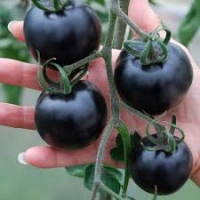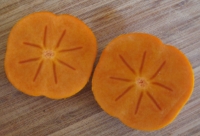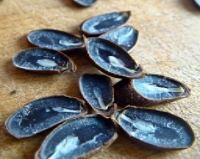Name: Wickon Trees
Frequency: These trees are relatively rare in Rynmere, growing only in north and central Warrick, near the Burning Mountains. They prefer dry soil and warm, flat land to grow on, generally only found in grasslands. Outside of Warrick, wickon trees are nonexistent.
Toxicity/Hazard: Wickon trees are nontoxic, though can be hazardous to humans in other ways. Their danger lies in their leaves. Should a person come into contact with wickon leaves, perhaps by climbing the tree, they would fall in danger of becoming ensnared in the tree's branches. The leaves also turn hard and sharp in the winter; as such it is advised to be careful when standing under one of the trees during that time.
Appearance: Wickon trees are moderately tall, straight-backed, deciduous trees measuring anywhere from 30 to 50 ft in height, with a trunk about as thick around as a man's arms hooped. They have peculiar leaves, green in color but otherwise strange: long, thin, and pointed on the end. The branches of the tree only grow out of the very top of the plant, leaving a long, barren trunk that is very hard to climb. The size of one leaf, if removed from the main body of the plant, is about the length of an adult forearm, and as thick around as two fingers together.

Wickon trees flower in the early spring like many other plants. Their flowers are said to be quite beautiful, trumpet-shaped, brilliant blue and flecked with black dots, reminiscent of a lily. The flowers grow in clusters and give off a delightful scent like a perfume, which in the summers give way to sweet-smelling blue-black fruit. During this time, specifically Saun, the wickon trees lose their leaves, unlike normal trees which shed in the winter.
On the outside, wickon fruit are rounded and smooth, almost shiny in appearance, and so dark blue as to be black. They grow anywhere in size from a bit smaller than a human palm to the size of a grapefruit.
The flesh of the fruit is soft and orange and marked with a simple, pleasing pattern, similar to a persimmon. Each fruit holds only eight seeds which are easily removed from the flesh. The taste of the fruit is incredibly sweet; the juice can be collected and dried in trays to produce yellowish wickon-flavored sugar, wonderful for use in pastries and desserts.
Wickon seeds are flat and dull on the outside, an unremarkable brown, each about the size of a nel (coin). Cut open, they are a beautiful blue. Wickon seeds are not good for much, though some grind them to add to more fiber and texture to their breads. Others chew and spit them much as someone might on straw or sunflower seeds, though wickon seeds have no taste of their own.
Properties/Abilities: For the most part, wickons are like other trees, with bark, roots, a trunk, and branches. It is their leaves that make them exceptional. Because the shape of their leaves is poor for collecting sunlight, wickon trees find nourishment in other ways, namely by trapping birds and small climbing animals in their branches. Their leaves have the ability to snap shut over prey, winding in place to trap small animals much like a slap bracelet on a wrist. In the summer when they defoliate, the fallen leaves lose their ability to snap and are not dangerous to walk near or on.
In the winter is when these leaves, now newly regrown on the trees' branches, become dangerous again, albeit in a different way. In the winter, starting with the first frosts, the leaves become stiff and sharp, making wickon trees somewhat risky to walk under during this time, as any displaced leaves may fall and puncture anyone beneath them. In this way, the trees again seek nourishment; any small animal killed under the trees' branches will provide nourishment for its roots.
Lifespan and Development: Wickons may live for up to 70 years, casting fruit every summer. They reproduce sexually, needing pollen from another tree's flowers to produce viable young. From a seed, a wickon tree may take ten years to reach a respectable height, and they grow perpetually throughout their lives. Seedlings are small and incredibly spiky, almost like cacti, to dissuade animals or other creatures from destroying them.
Other Information: A person or animal ensnared by a wickon tree will not die immediately and will find themselves unhurt even if the leaves have wound around their throat, though they will likely be unable to move or pull free. If they are able to call for help they stand a good chance of being rescued unharmed, as long as their rescuer is careful not to be trapped themself. Wickon leaves are strong enough to grip onto a creature but not strong enough to crush or damage it; their prey tends to die from exposure, dehydration, or starvation, not from any injury sustained from the tree.









